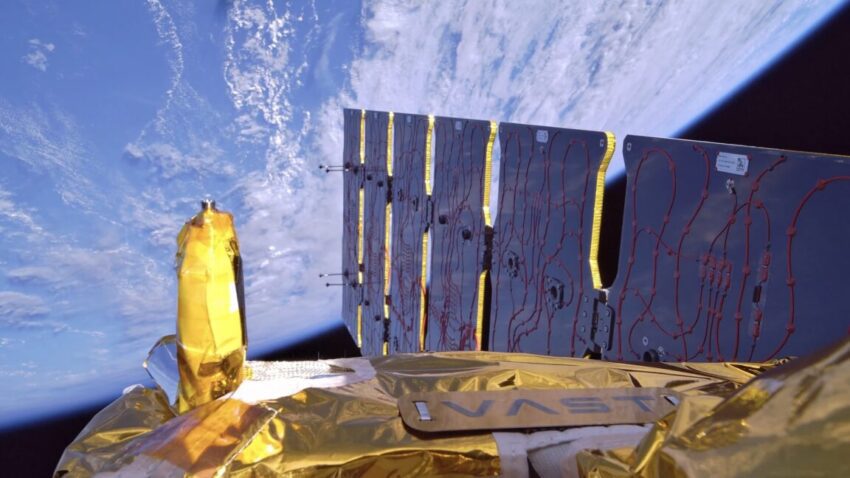
a commercial space station startup now has A significant milestone has been achieved in the realm of commercial space exploration with the successful launch of Vast’s pathfinder mission for its privately owned space station.
a commercial space station startup now has
Overview of the Haven Demo Mission
Vast’s Haven Demo mission launched into orbit early Sunday morning, marking a pivotal moment for the company as it seeks to establish a foothold in the burgeoning commercial space sector. The mission took off just after midnight from Cape Canaveral Space Force Station in Florida, utilizing a SpaceX Falcon 9 rocket. This launch was part of SpaceX’s Bandwagon 4 mission, which carried a total of 18 satellites, including a South Korean spy satellite and a small testbed for Starcloud, a startup collaborating with Nvidia to develop an orbital data center.
Technical Achievements
Upon reaching orbit, the half-ton Haven Demo spacecraft successfully stabilized itself and extended its solar array, a critical step in proving the viability of Vast’s design. The deployment of the solar array was captured in stunning 4K video, which Vast shared on social media platforms, showcasing the beauty and complexity of the operation. This successful deployment is not just a technical achievement but also a demonstration of the spacecraft’s ability to generate power, which is essential for its operational capabilities in space.
Mission Objectives
The primary objective of the Haven Demo mission is to validate the technologies and designs that Vast plans to use in its future commercial space station. This includes testing various systems that will be integral to the station’s functionality, such as power generation, stabilization, and communication. The mission serves as a shakedown cruise, allowing engineers to identify any potential issues before the full-scale deployment of the commercial station.
The Commercial Space Landscape
The launch of the Haven Demo mission is a significant development in the context of the growing commercial space industry. Over the past decade, numerous companies have emerged, aiming to capitalize on the opportunities presented by low Earth orbit (LEO) activities. Vast is positioning itself as a key player in this sector, competing with established entities like SpaceX, Blue Origin, and Axiom Space.
Vast’s Vision for Space Stations
Founded in 2020, Vast aims to create a commercially viable space station that can host a variety of activities, including research, manufacturing, and tourism. The company envisions a future where private entities can operate in space, conducting experiments and offering services that were previously the domain of government agencies. Vast’s approach focuses on modular designs that can be adapted for different uses, making it a versatile option for various stakeholders in the space industry.
Market Implications
The successful launch of the Haven Demo mission could have far-reaching implications for the commercial space market. As more companies enter the field, competition will likely drive innovation and reduce costs, making space more accessible to a broader range of organizations. This could lead to an increase in scientific research, technological development, and even tourism in space, as private entities explore new business models.
Stakeholder Reactions
The launch has garnered attention from various stakeholders in the space industry, including investors, researchers, and government officials. Many view Vast’s mission as a promising step forward in the commercialization of space. Investors are particularly interested in the potential returns from a successful commercial space station, which could open up new revenue streams in areas such as satellite servicing, space tourism, and scientific research.
Government Perspective
Government agencies, including NASA, are also closely monitoring developments in the commercial space sector. The agency has expressed interest in partnering with private companies to leverage their capabilities for missions that align with national interests. As the U.S. government continues to prioritize space exploration and development, collaborations with companies like Vast could enhance the country’s position in the global space race.
Public Interest and Perception
The public’s interest in space exploration has surged in recent years, fueled by high-profile missions and the increasing visibility of private companies in the sector. The successful launch of the Haven Demo mission is likely to further ignite public enthusiasm for space travel and exploration. As more people become aware of the possibilities that commercial space stations can offer, support for such initiatives may grow, influencing future funding and policy decisions.
Challenges Ahead
Despite the success of the Haven Demo mission, Vast and other companies in the commercial space sector face numerous challenges. The complexities of spaceflight, including the need for rigorous safety protocols and the high costs associated with launching and maintaining spacecraft, are significant hurdles. Additionally, regulatory challenges and the need for international cooperation in space activities can complicate operations.
Technical Challenges
One of the primary technical challenges is ensuring the reliability and safety of spacecraft systems. As Vast moves forward with its plans for a commercial space station, it will need to conduct extensive testing and validation of its technologies. This includes not only the spacecraft’s structural integrity but also its life support systems, communication capabilities, and power management.
Regulatory and Policy Issues
Regulatory challenges also loom large for companies like Vast. The space industry is subject to a complex web of regulations that govern everything from launch licensing to orbital debris management. Navigating these regulations can be time-consuming and costly, potentially delaying projects and increasing operational risks. Furthermore, as more countries and private entities engage in space activities, the need for international agreements and cooperation becomes increasingly important.
Future Prospects
Looking ahead, the successful launch of the Haven Demo mission positions Vast favorably in the competitive landscape of commercial space. The company plans to build upon this success by continuing to refine its technologies and expanding its partnerships with other organizations in the space sector. As the demand for commercial space services grows, Vast aims to be at the forefront of this evolution, offering innovative solutions that meet the needs of various stakeholders.
Upcoming Missions
Vast’s future missions will likely focus on further testing and validation of its systems, with an eye toward the eventual deployment of its commercial space station. The company has indicated that it plans to conduct additional missions to gather data and refine its designs, ensuring that its station can operate safely and efficiently in the challenging environment of space.
Collaboration Opportunities
As Vast continues to develop its capabilities, collaboration with other companies and research institutions will be crucial. Partnerships can provide access to additional resources, expertise, and funding, accelerating the development of new technologies and services. By fostering a collaborative environment, Vast can enhance its competitive edge and contribute to the overall growth of the commercial space sector.
Conclusion
The launch of Vast’s Haven Demo mission marks a significant step forward in the commercialization of space. As the company works to validate its technologies and designs, it is poised to play a crucial role in shaping the future of space exploration and utilization. With increasing interest from investors, government agencies, and the public, the potential for commercial space stations is becoming more tangible, paving the way for a new era of activities in low Earth orbit.
Source: Original report
Was this helpful?
Last Modified: November 4, 2025 at 4:35 am
2 views














